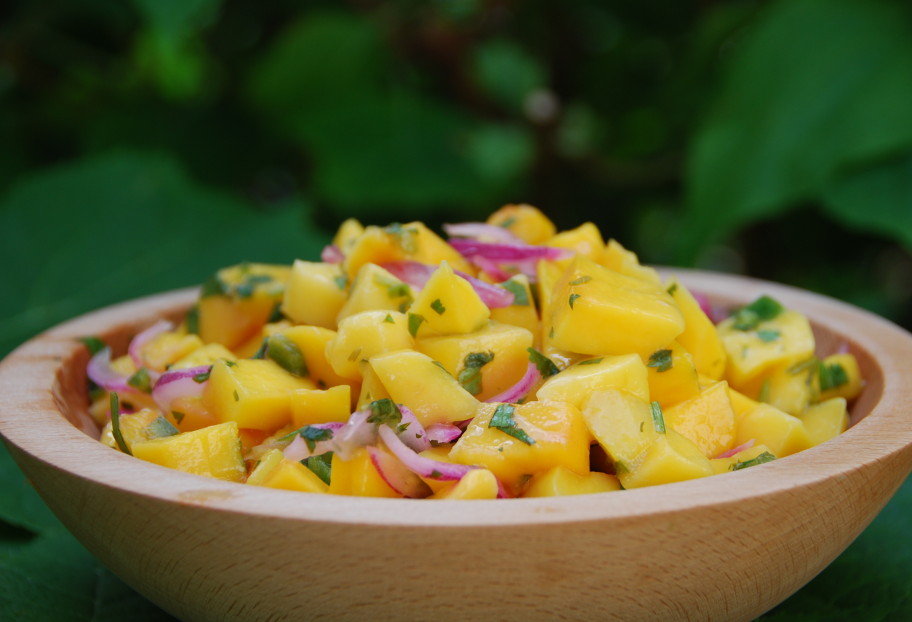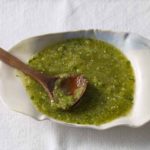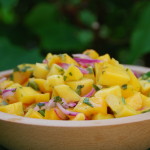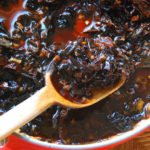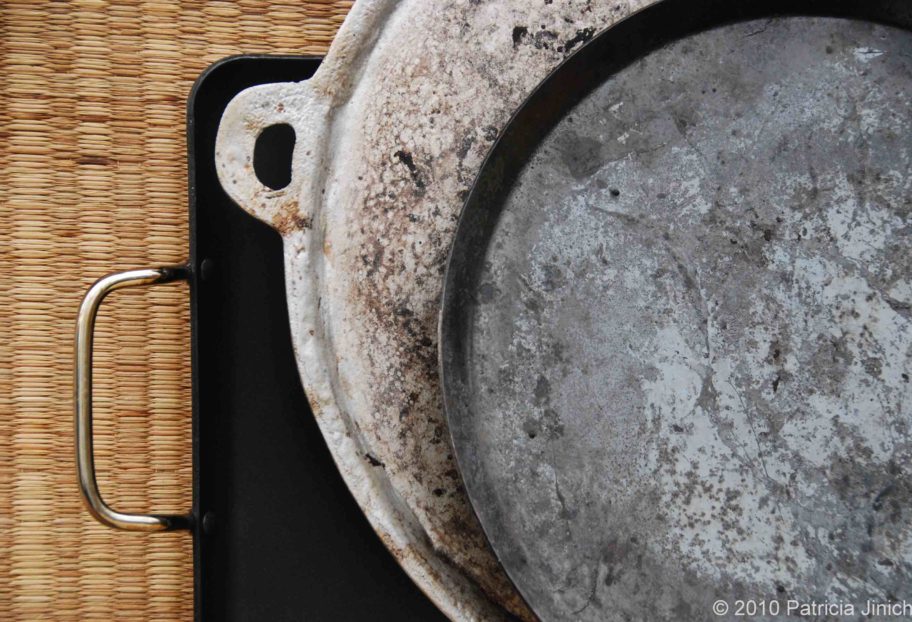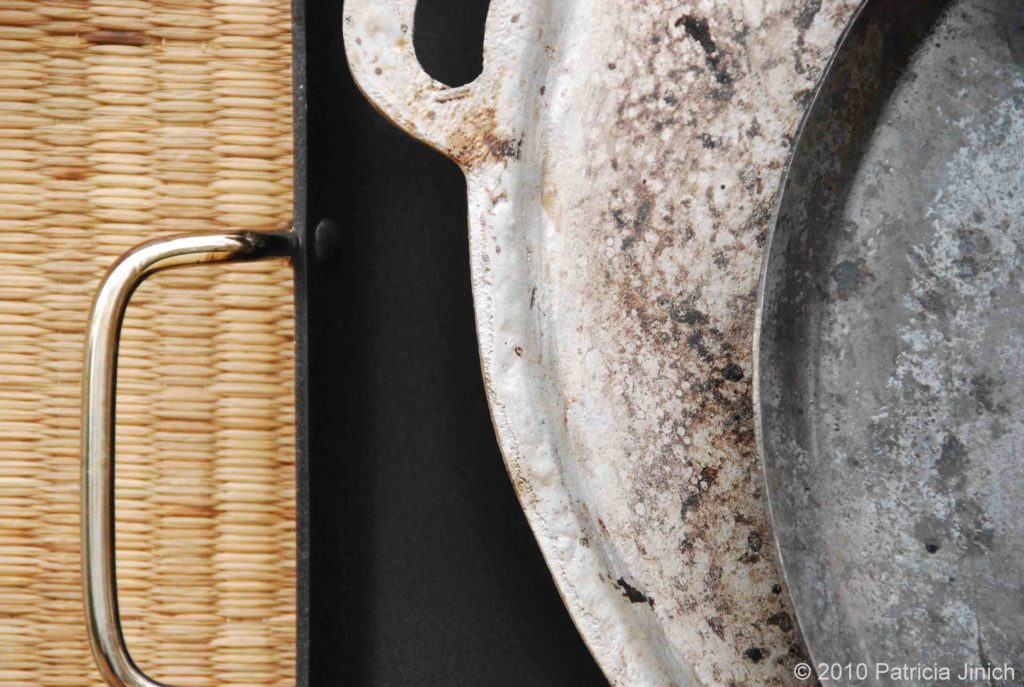“All I want is a hamburger, a hot dog, a Pizza, a nice big steak, some Texas style bar-b-q and a big plate of pancakes… no tacos or anything Mexican ok?” My dad said, after devouring the welcoming meal I prepared for him, which happened to be Tacos de Guisado.
Guisados are Mexican style stews, which can be ladled into warm corn tortillas. There are plenty of Fondas or small restaurants that specialize in them throughout Mexico. Since my dad loves them, I received him with three of his favorites: Chicken Tinga heavy on the chipotle, beef cooked in a green salsa with cubed potatoes and nopalitos, cactus paddles, sauteed with onion, Guajillo Chilies and corn. There were also refried beans and white rice, as they are such friendly sides to tacos.
After he made it clear that he didn’t want anything Mexican for the next three days, making me laugh so hard along the way, we set off to satisfy his cravings.
The next morning we were at the pancake place in front of a double stack of buttermilk pancakes with butter, extra maple syrup and bacon. And some grits. It was hard to make him wait for lunch. When he lost all patience he dragged me to the Pizza place and then had a Hot Fudge Sundae from across the street. Dinner came around soon enough along with steaks, baked potatoes and a Mexican Chayote salad I sneaked in there.
The next morning, after lox and bagels at home, we went for a late Texas style bar-b-q lunch. Dinner was a Reuben with lots of dill pickles and a potato salad. But the last morning he couldn’t help it.
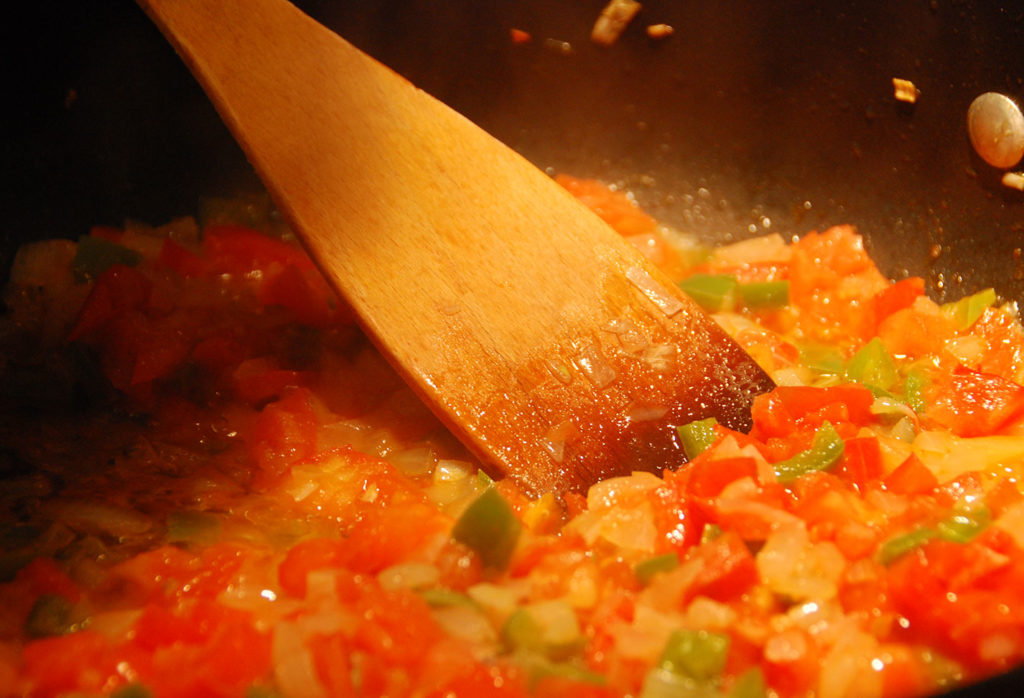
As he tied one of my aprons around his waist, he announced, I am making the best Huevos a la Mexicana that you have ever tried in your life. So we chopped just enough onion, less tomatoes than I would have wanted and a lot of Jalapeños. As he cooked, he used strange and probably non-existing terms to describe what made his eggs so tasty… See how I am un-rawing the onion and mushing the tomato?
There are countless egg dishes in Mexican cooking, one better than the other. But these are the ones I prepare the most at home. They are easy to make, super tasty and dress up a breakfast in a wink. What’s more, I always have oil, eggs, tomatoes, onion and either Jalapeño or Serrano chiles handy.
Although the ingredients are always the same, versions can vary. That is mostly because some people like my dad cook the tomatoes slightly, while others like me cook the tomatoes until they are pasty and smooshy looking (I see where I get my funny use of terms now). The ratio of ingredients also varies. I use more tomatoes than my dad, but we both like it spicy. Whereas I like to eat them with hot corn tortillas, my dad likes to eat them with toasted sandwich bread (some people love these eggs with a side of toast smothered in cream cheese and that is pretty tasty too…).
This just makes me think of how accommodating Mexican food is. You can learn a basic idea and how to make it, and then tweak it to your preference.
Though while we were making breakfast I was craving for more tomatoes in those eggs, and wishing we could cook them a bit more, I have to admit that his version that morning topped off any that I have tried. Maybe it was because of the way he explained why his version was the most incredible in the world, maybe it was because of how much he enjoyed eating them and scooping some into corn tortillas to make some tacos for me (he had said no more tacos but one can only go so many days without tacos, you know?), or maybe it was because I was sad to see him go.
We didn’t get to the hot dogs or the hamburgers. I had thought of the places to take him so he could eat them all, but we ran out of time. But as it’s been said, you have to leave something for the next time if you want that next time to happen. I have until then to recover from all that eating.
Meanwhile, I leave you with a recipe for Huevos a la Mexicana, my father’s style, with some notes on my variations. But you can come up with yours!
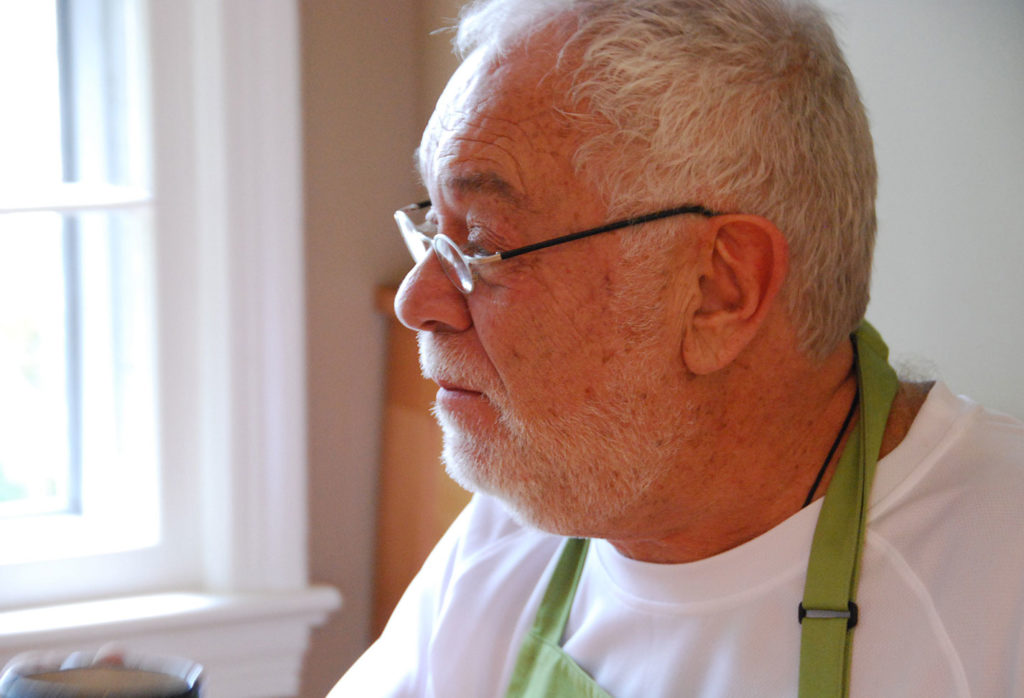
Eggs a la Mexicana
Ingredients
- 4 tablespoons corn, safflower or vegetable oil
- 1/2 cup white onion chopped
- 1 jalapeño or serrano chile seeded if less heat desired and finely chopped, or more to taste ( we went for 3)
- 3/4 pound ripe tomatoes about 2 cups chopped (I add an extra cup)
- 8 eggs lightly beaten
- 1/2 teaspoon kosher or sea salt more or less to taste
- Hot corn tortillas or pieces of toast
Instructions
- Heat oil in a skillet over medium heat. Add onions, and cook stirring often for about 4 minutes, until they have softened but not browned. Stir in the chiles, cook for another minute. Incorporate the chopped tomatoes and let the mix cook and season, stirring often, for about 5 minutes (I let them cook about 4 to 5 minutes more until tomatoes are thoroughly cooked, mushy and their red color has deepened).
- Meanwhile, crack the eggs in a bowl, add some salt, and beat them with a whisk or fork. Lower the heat to medium-low and pour eggs over the tomato mix. Stir as the eggs cook until desired donenness, but don't let them dry up. Serve with a side of refried beans, hot tortillas or a piece of toast.



